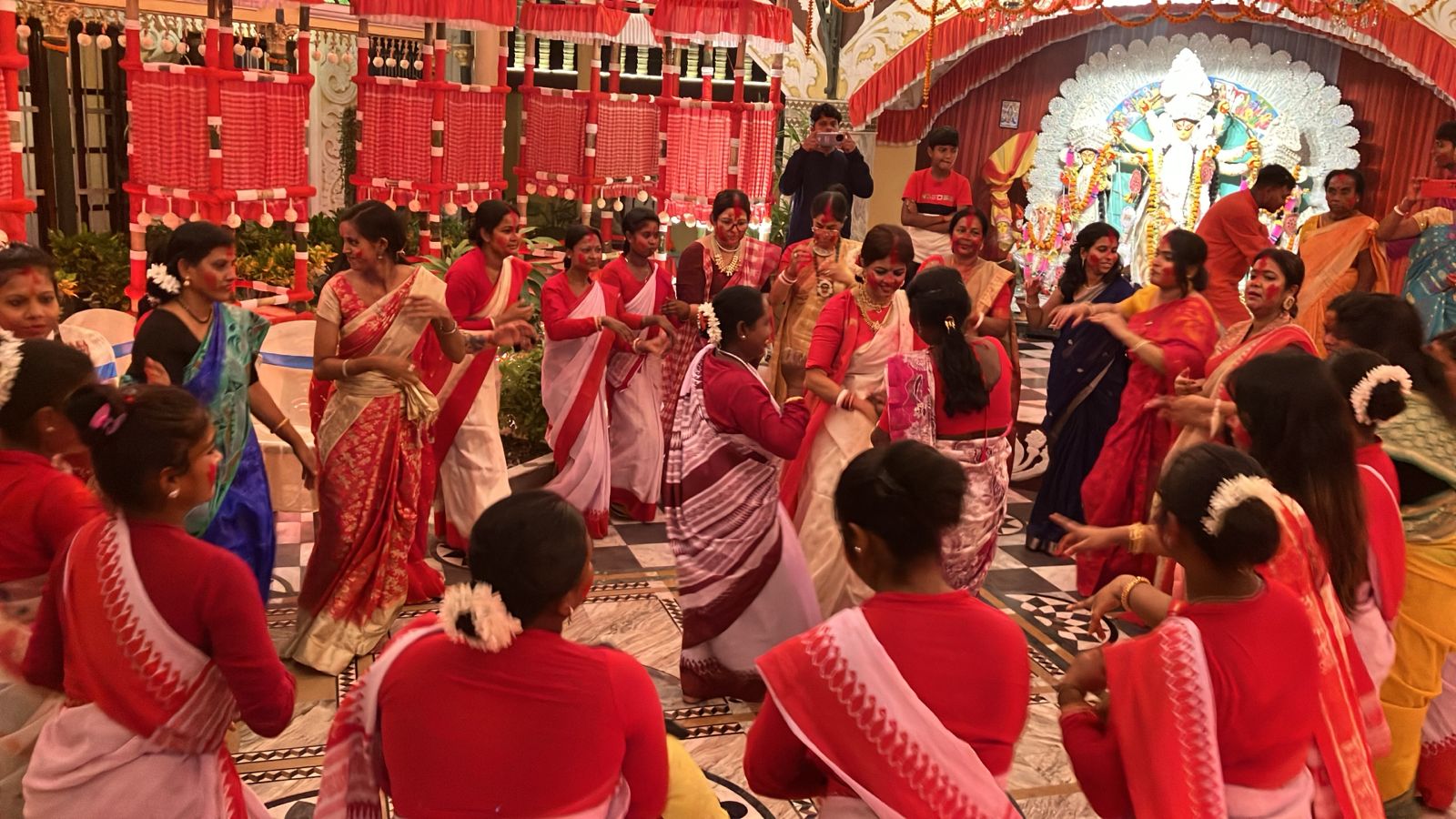
In the heart of Bengal, where tradition meets heritage, Bari Kothil stands as a beacon of cultural significance. As the festive season of Durga Puja comes to an end, we reflect upon the Bengali culture and rituals with a microscopic gaze.
A scholarly exploration of the profound rituals and customs that adorn the tapestry of Durga Puja, the grand festival that reverberates through every Bengali heart unveiled layers of history and heritage. Beyond the vibrant decorations and the beats of dhak drums, we delve into the deep-rooted cultural and spiritual significance that underpins every ritual.

"Sasthi Amantran"
Day 6: Maha Sasthi
অকাল বোধন (Akal Bodhan)
The untimely awakening of Maa Durga
As per Ramayana, during the battle between Rama and Ravana, Rama sought the blessings of Goddess Durga for his victory. He performed puja to the goddess during the uncustomary time of autumn and hence the puja was known as "Akal Bodhan.
Since then, Bengalis on the 6th Day of Navaratri and the First Day of Durga Puja perform the untimely ritual of awakening Maa Durga during Autumn instead of Spring.
আমন্ত্রণ (Amantran)
Inviting Maa Durga
"Amantran' means invitation. So, after the Adhivas ritual, Maa Durga is then offered prayers with proper rituals and traditions to accept the invitation to the Navpatrika Puja.
অধিবাস (Adhibas)
Invoking Maa Durga
The invocation of Goddess Durga in a fo M (Bilva Tree) is what is termed as Qin (Avahana) Then, symbolically placing her spirit or installing Maa Durga in the sanctified Bilva Tree is called the Adhibas ritual.
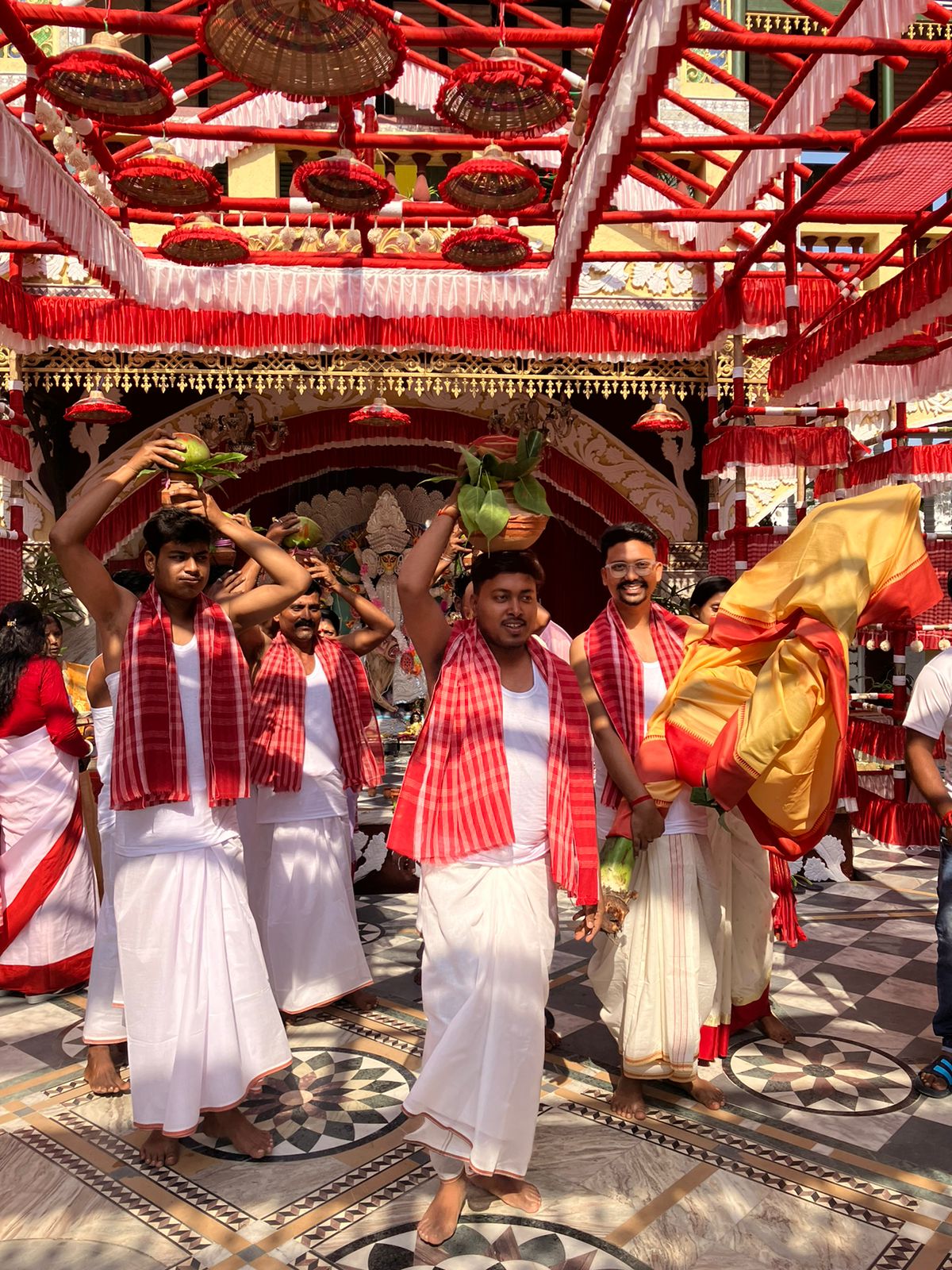
"Saptami Nabapatrika Snan"
Day 7 : Maha Saptami
নবপত্রিকা স্নান(Nabapatrika Snan)
On the 7th day of Shardiya Navratri or Durga Puja Maa Durga started the battle against Mahishasura.
Nabapatrika (nine leaflets mostly tied together) is given a bath, prior to dawn, in the holy river Ganga or by any nearby lake or pond along with the Kolabou (banana tree) as per rituals it signifies the wife of Lord Ganesha. The 'Nabapatrika' or nine plants are symbolic representations of the nine forms of Goddess Durga. Before the main prayer ceremony of Mahasaptami, Kalparambha, and Mahasnan are performed.
Back at the Bari, the 'Ghot Sthapon' and 'Sankalpa' ritual happens, which invokes Maa Durga into the idol.

"Maha Ashtami Pushpanjali"
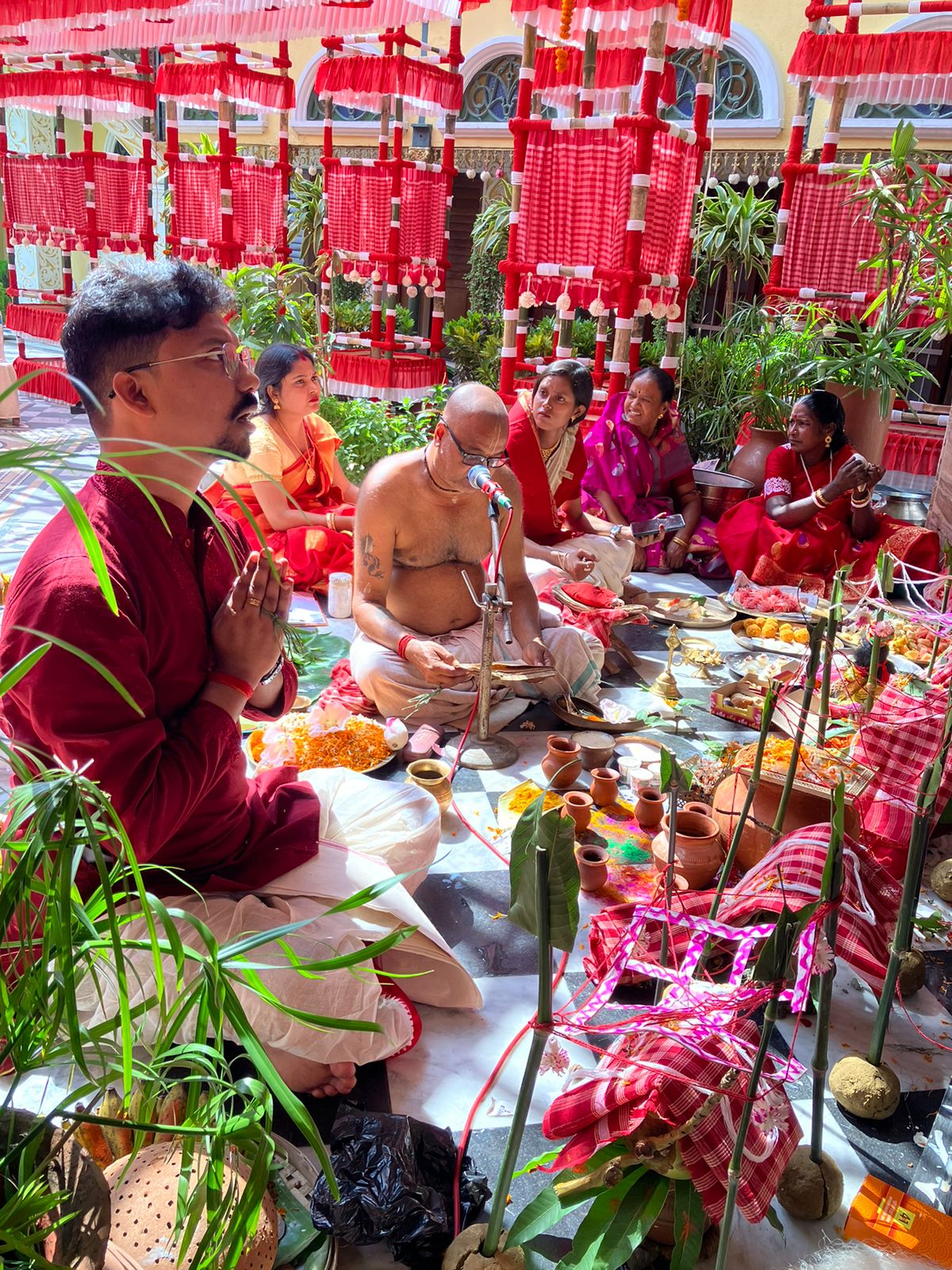
"Sankalpa"
Day 8: Maha Ashtami
মহাষ্টমীর পূজা ও অঞ্জলি (Maha Ashtami Puja and Anjali)
On the 8th Day of Durga Puja, It is believed in some regions, the goddess Chamunda appeared on this day from the forehead of Mother Durga and annihilated Chanda, Munda, and Rakthabija.
Maha Ashtami is a significant day in the Durga Puja festivities. While Pushpanjali, an offering of flowers, is made on all days of the puja, Durga Ashtami holds the utmost sanctity for offering Anjali to Goddess Durga.
সন্ধি পূজা (Sandhi Puja)
The last 24 minutes of Maha Ashtami Tithi and the first 24 minutes of Maha Navami Tithi are known as Sandhi Time or the holy juncture during Durga Puja. The puja is completed by offering 108 lotus flowers, a single fruit, cloth, jewelry, a garland of 108 hibiscus, a garland of 108 Aparajita flowers, and a garland of 108 wood apple (Bel) leaves. Dipmala, a series of 108 diyas are burnt to welcome goddess Chamunda to the house.
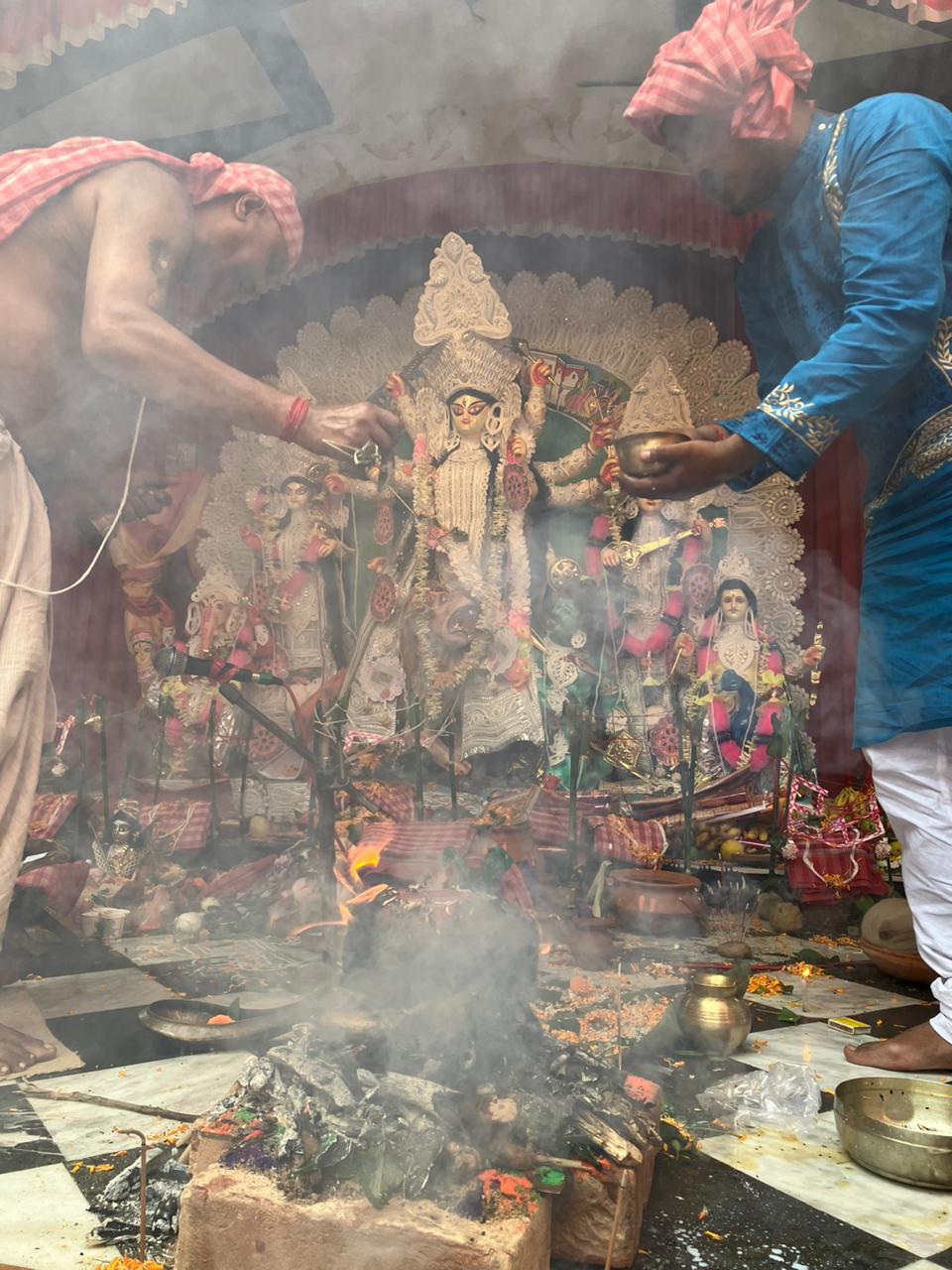
"Maha Navami Hom Yajna"
Day 9: Maha Nabami
চণ্ডিপাঠ(Chandi Path)
Chandi Path is a holy scripture. 'Chand' in Sanskrit means to 'tear apart'. When a person recites the Chandi path, he is unconsciously made aware of the presence of the divine power, which will guide him out of all his troubles. It describes the story between Good and Evil, and how Goddess Durga destroys the Demon Mahishasura.
হোমযজ্ঞ (Hom Yajna)
Yajna is also called Hom in Bengali. In Puranas, fire is believed to be a form of God The Samrpan of fruits and other materials is part of purifying the human soul. Yajna happens on the ninth day of Durga Puja and is followed by the Maha Navami Puja.
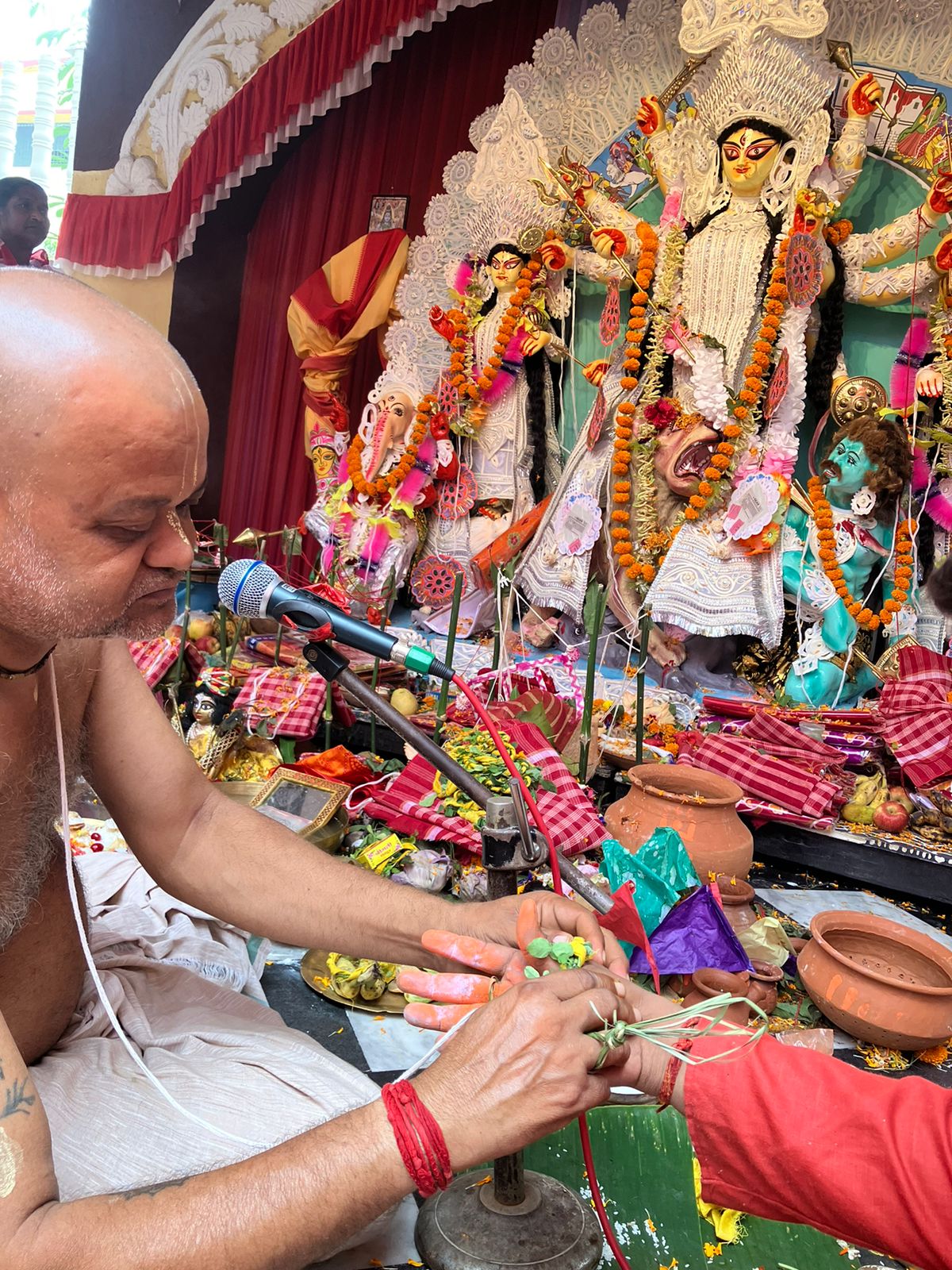
"Bijoya Dashami Aparajita Puja"
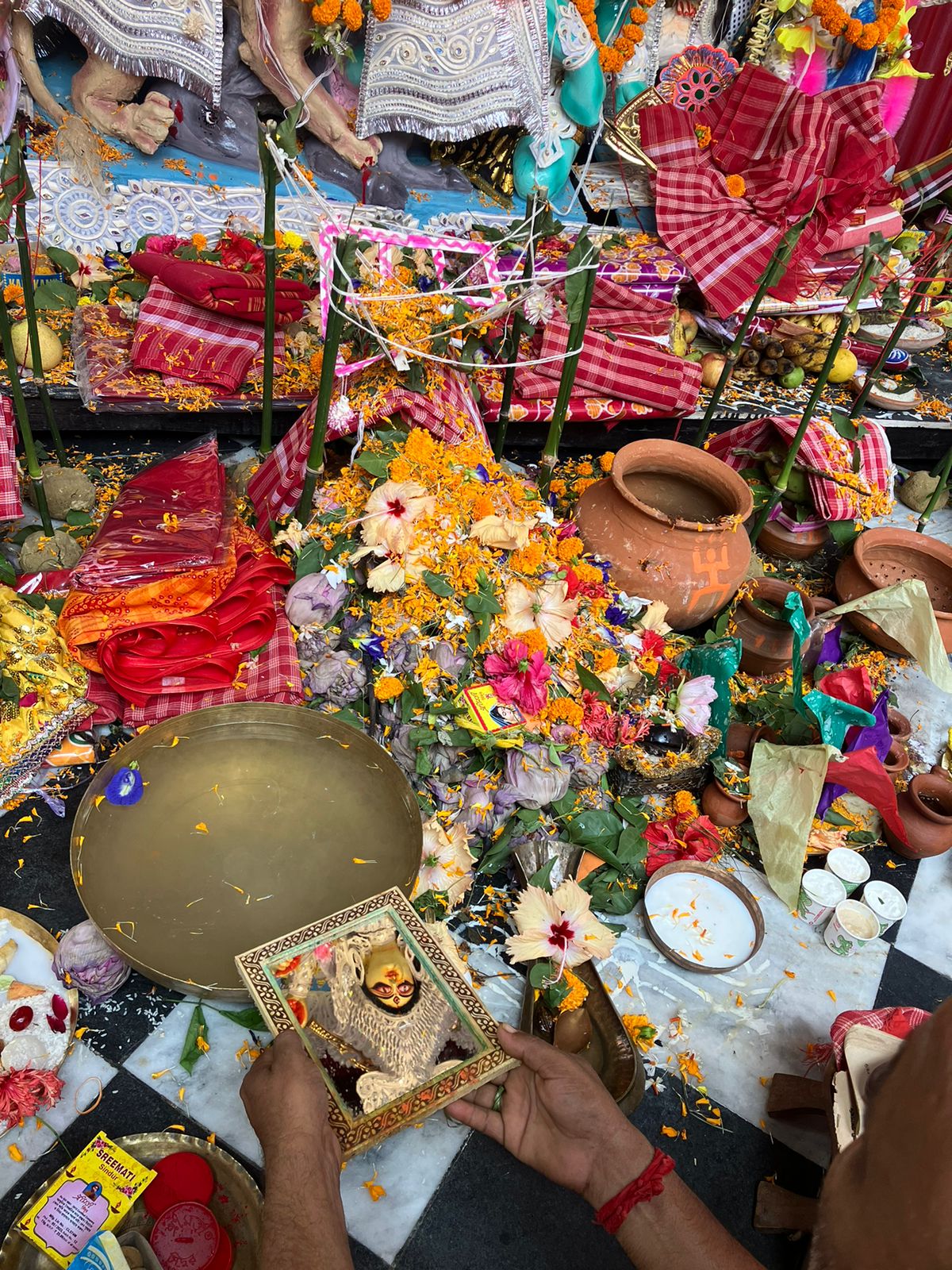
"Bijoya Dashami Darpan Bisarjan"
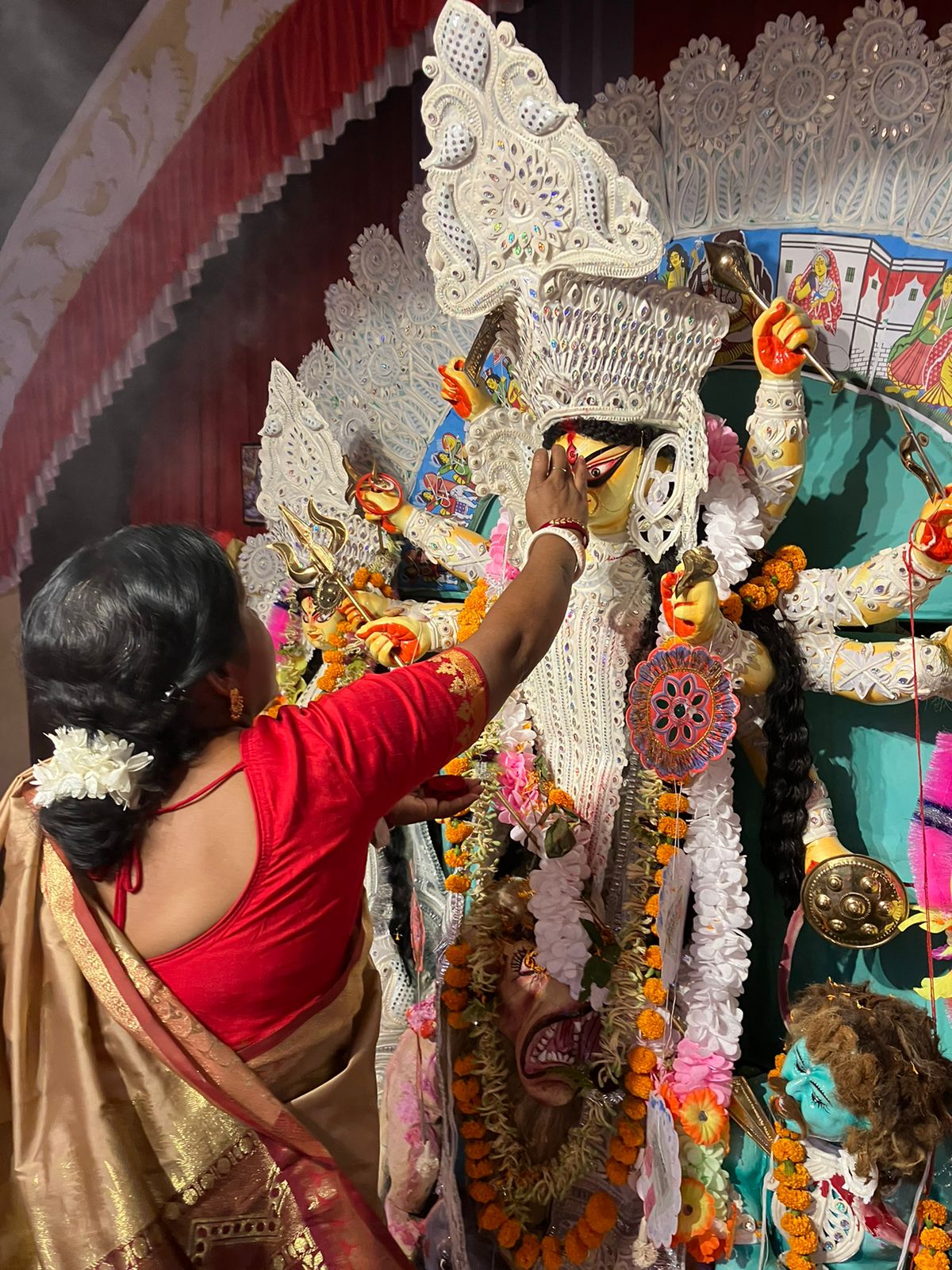
"Maa er Boron Bijoya"
Day 10: বিজয়া দশমী (Bijaya Dashami)
দর্পণ বিসর্জন ( Darpan Visarjan)
Maha Dashami starts with usual rituals including darpan visarjan or the symbolic immersion of the idols by way of which the devotees try to catch a glimpse of the feet of Goddess Durga in the mirror.
দেবীর বরণ (Debi Baran)
Devi Boron is the ritual where Durga devotees bid adieu to the goddess by drawing a betel leaf on their palms and touching it to the deity's face, symbolically wiping the face of Maa Durga off any tears, as she prepares to leave her parents behind to join her husband.
অপরাজিতা পূজা (Aparajita Puja)
The word “aparajita” means “invincible”. The rituals of Durga Puja are rounded off with Aparajita Puja, which is a special worship for eternal victory. after the Aparajita Puja, small sprigs of Aparajita trees are tied to the wrists of the devotees present. This is believed to instill a sense of courage and victory in the minds of the devotees, throughout the coming year.
সিদুঁর খেলা (Sindoor Khela)
‘Bijaya Dashami’ starts with ‘Sindoor Khela’, an essential part of the festivities. Married women, dressed in pristine white sarees with red borders, indulge in playfully smearing sindoor (vermilion) on each other's faces and the idols of the goddess.
প্রতিমা নিরঞ্জন (Pratima Niranjan)
The idol is taken to the nearby water body for immersion, as Bengalis with heavy hearts bid adieu to Maa. It is said that by this immersion, Maa Durga returns to her home in Kailash.